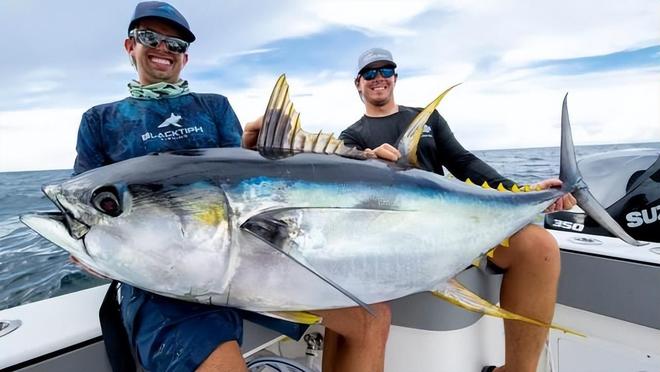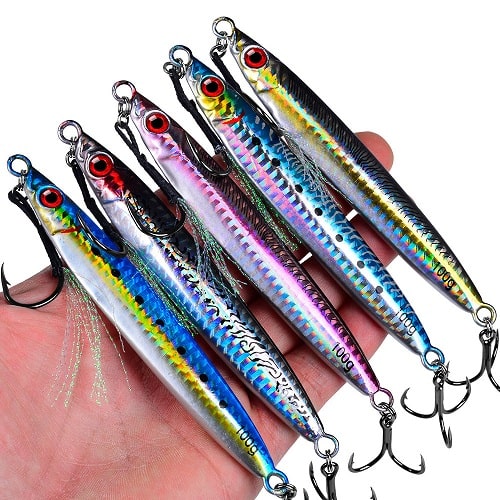Sea fishing, a thrilling pursuit that combines the allure of the open ocean with the excitement of the catch, offers an experience like no other. Unlike freshwater fishing, sea fishing presents unique challenges and opportunities that require specialized equipment, techniques, and knowledge. In this blog post, we’ll dive deep into the world of sea fishing, exploring everything from essential gear to expert tips that will help you make the most of your maritime angling adventures.?
Specialized Equipment for Sea Fishing? Heavy-Duty Rods and Reels?
When it comes to sea fishing, the fish you’ll encounter are often larger and more powerful than their freshwater counterparts. This calls for heavy-duty fishing rods and reels that can withstand the brute force of these marine creatures. Surf casting rods, typically ranging from 10 to 14 feet in length, are ideal for casting long distances from the shore. They are built with strong, durable materials like graphite or composite blends to handle the stress of powerful casts and the fight against large fish.
Pair your rod with a conventional baitcasting reel or a big game spinning reel. Conventional reels, mounted on top of the rod, offer high line capacity and excellent cranking power, making them suitable for reeling in large tuna or marlin. Big game spinning reels, on the other hand, provide smooth drag systems and are easier to use for beginners who are new to sea fishing. When choosing a reel, look for one with a high gear ratio for fast line retrieval and a reliable drag system that can be adjusted to handle different fish species.
Braided Fishing Lines?
In the saltwater environment, braided fishing lines are a popular choice. Unlike monofilament lines, braided lines have almost no stretch, which means you can feel every nibble and get a better hookset. They also offer superior strength and abrasion resistance, crucial for dealing with sharp coral, rocks, and the rough mouths of saltwater fish. A braided line with a pound test of 30 to 80 pounds is suitable for most sea fishing applications, depending on the size of the fish you’re targeting.
- Saltwater Lures and Baits?
Saltwater fish have different feeding habits compared to freshwater fish, so you’ll need a variety of specialized lures and baits. Jigs are highly effective in sea fishing. These weighted lures can be retrieved in a variety of ways to mimic the movement of injured baitfish, attracting predatory species like snapper, grouper, and amberjack.
Live baits such as mullets, sardines, and squid are also excellent choices. They can be rigged using circle hooks, which are designed to hook the fish in the corner of the mouth, reducing the chance of gut-hooking and increasing the survival rate of released fish. Another option is to use artificial soft plastics, which come in various shapes and colors and can be customized to imitate the local prey species.?
- Techniques for Successful Sea Fishing?Bottom Fishing?
Bottom fishing is a popular sea fishing technique, especially for targeting species like cod, halibut, and flounder that dwell near the ocean floor. To bottom fish, you’ll need to use a sinker heavy enough to keep your bait or lure on the bottom. Attach your bait or lure to the end of your line, followed by the sinker, and then cast it out. Let the line sink to the bottom, and then slowly retrieve it, bouncing the bait or lure along the seabed to attract fish.
- Trolling?
Trolling involves pulling lures or baits behind a moving boat. This technique is great for covering a large area of water and targeting pelagic fish like tuna, wahoo, and mahi-mahi. When trolling, use a trolling motor or the boat’s engine to move at a slow, steady speed, usually between 3 to 6 knots. You can use multiple lines with different lures at various depths to increase your chances of a catch. Make sure to use a rod holder to secure your rod while trolling and keep an eye on the rod tip for any signs of a bite.
- Surf Fishing?
Surf fishing allows you to enjoy the thrill of sea fishing from the shore. When surf fishing, look for areas where the waves break, as these areas often attract fish. Cast your line as far as you can into the surf, and then let the bait or lure drift with the current. You can also try retrieving the line in short, jerky motions to imitate the movement of a wounded fish. Be prepared to move around the beach to find the best fishing spots, as fish tend to congregate in certain areas depending on the tide, wind, and water conditions.
Safety and Preparation?
Before heading out for a sea fishing trip, it’s essential to prioritize safety. Check the weather forecast and avoid fishing in adverse conditions such as strong winds, thunderstorms, or high tides. Wear appropriate safety gear, including a life jacket, especially if you’re fishing from a boat. Make sure your fishing equipment is in good working condition, and bring along a first aid kit in case of any injuries.?
It’s also a good idea to familiarize yourself with local fishing regulations and obtain the necessary fishing licenses. Different regions have specific rules regarding catch limits, size restrictions, and protected species. By following these regulations, you can help preserve the marine ecosystem and ensure sustainable fishing for future generations.?
In conclusion, sea fishing is an exhilarating and rewarding activity that offers a unique connection to the ocean. With the right equipment, techniques, and preparation, you can embark on unforgettable sea fishing adventures and reel in some of the most prized catches. So, gear up, set sail, and let the thrills of sea fishing unfold!




